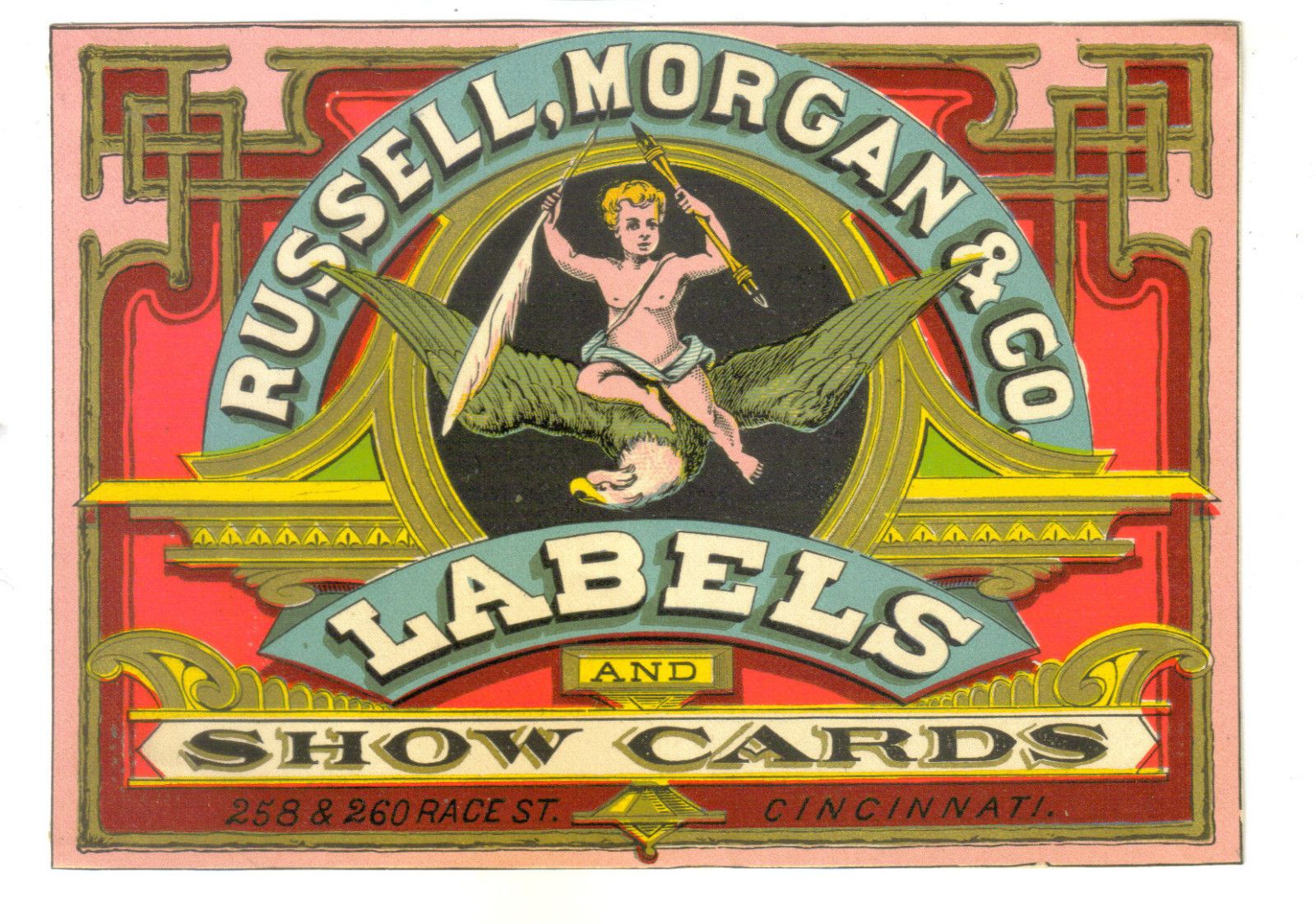
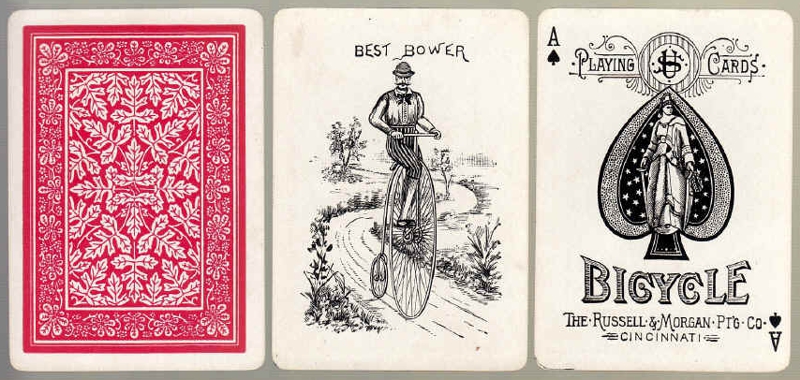
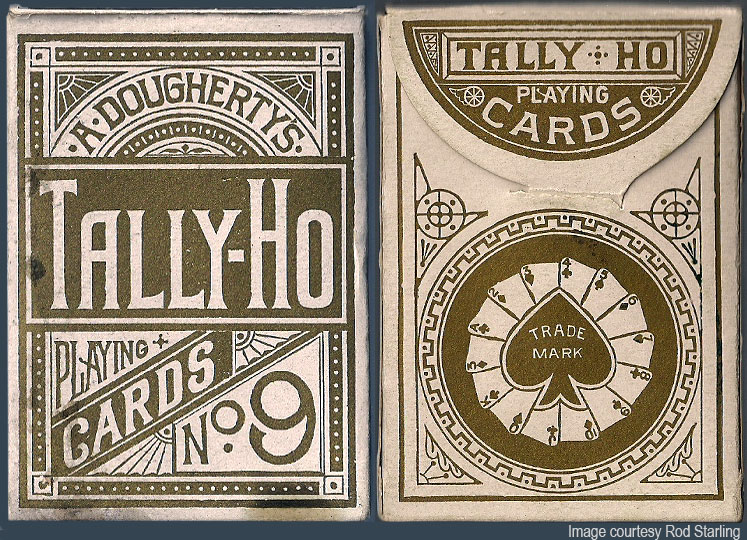
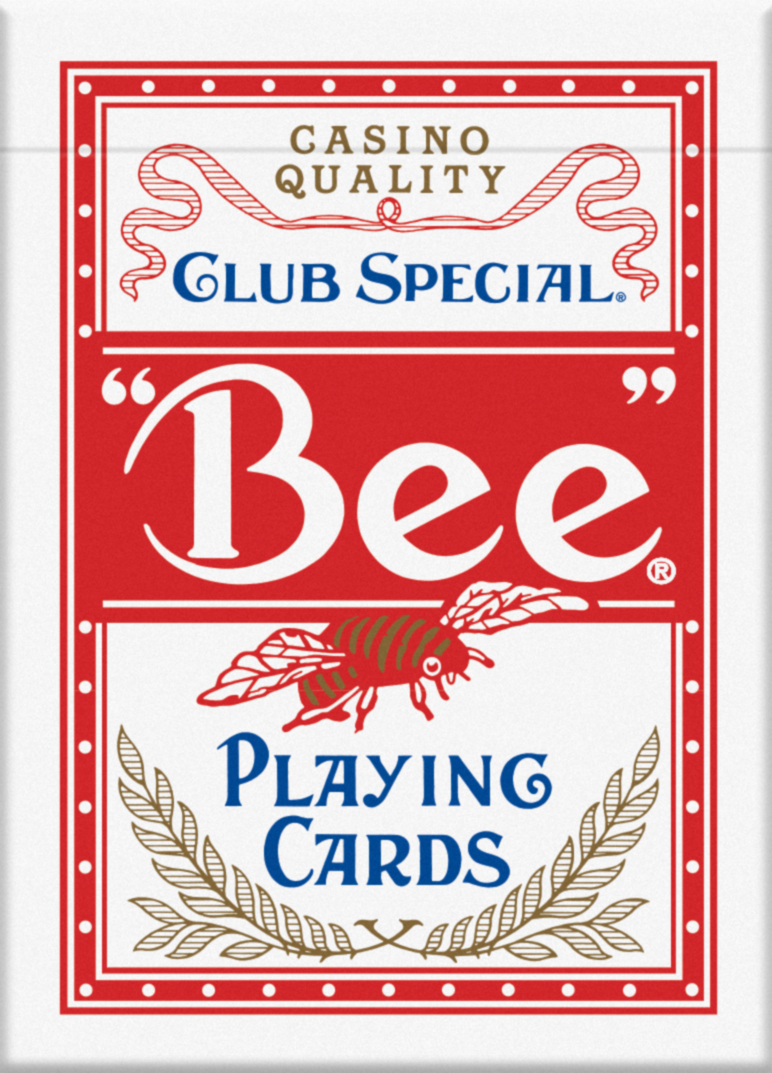
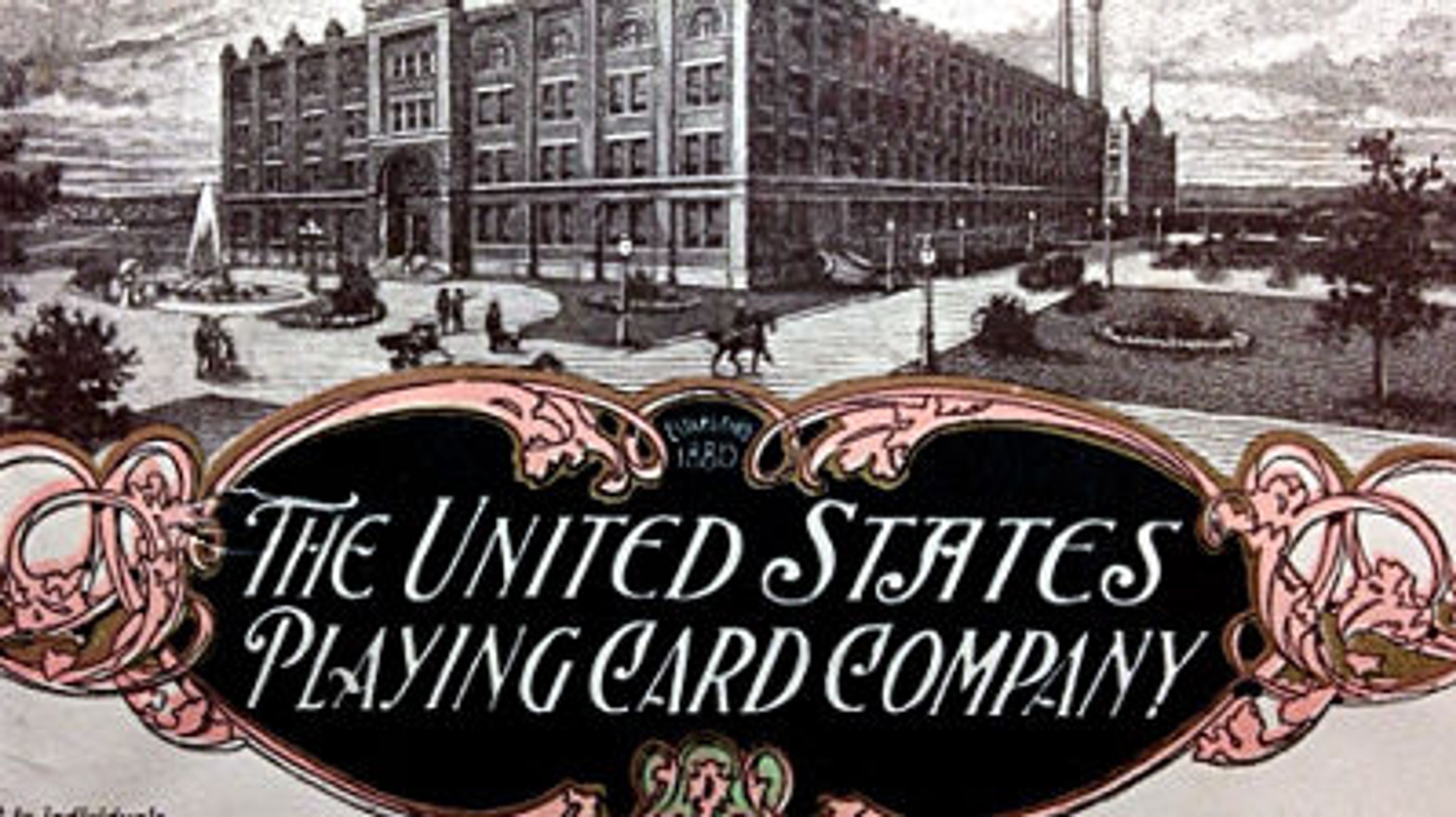

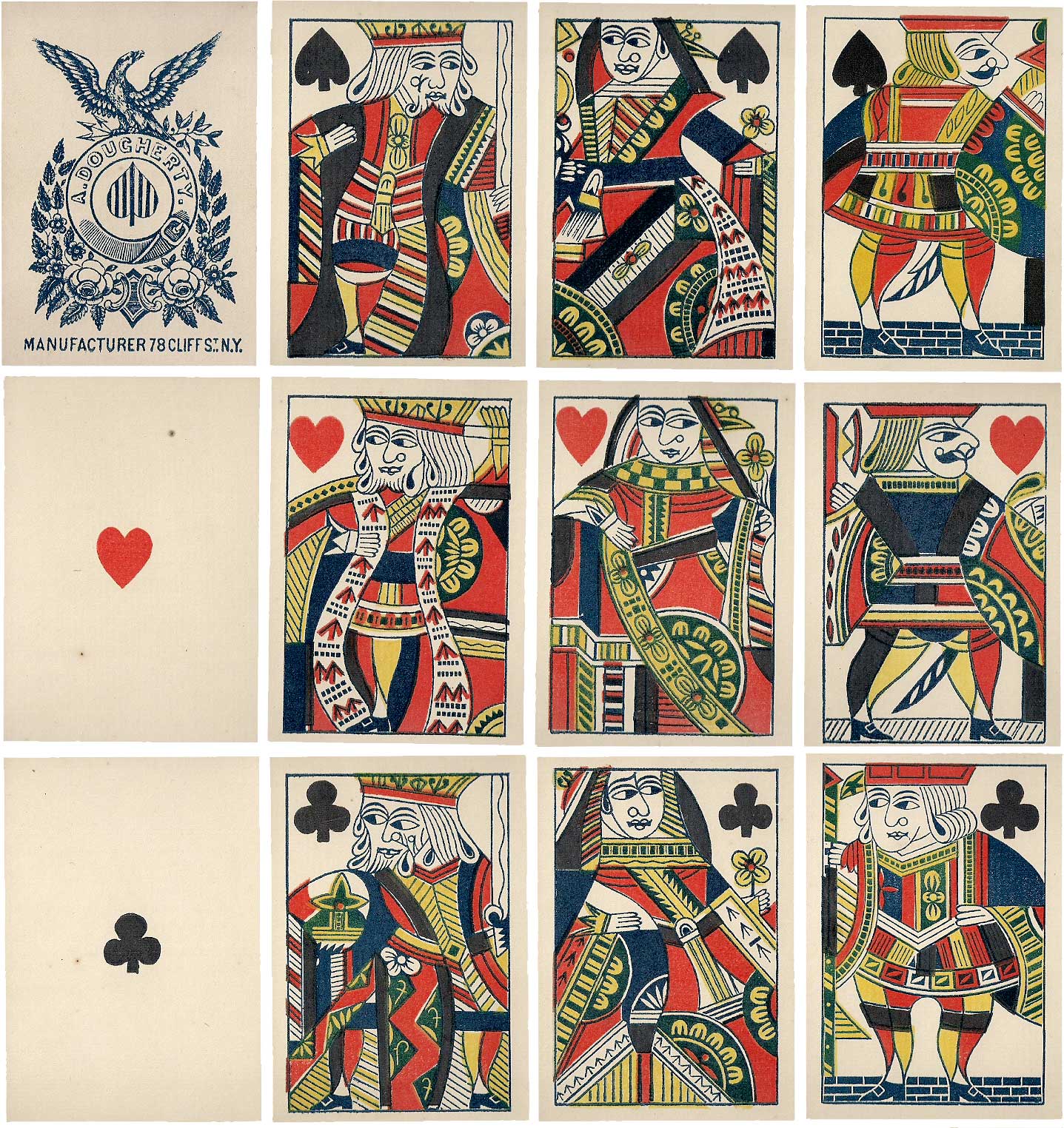
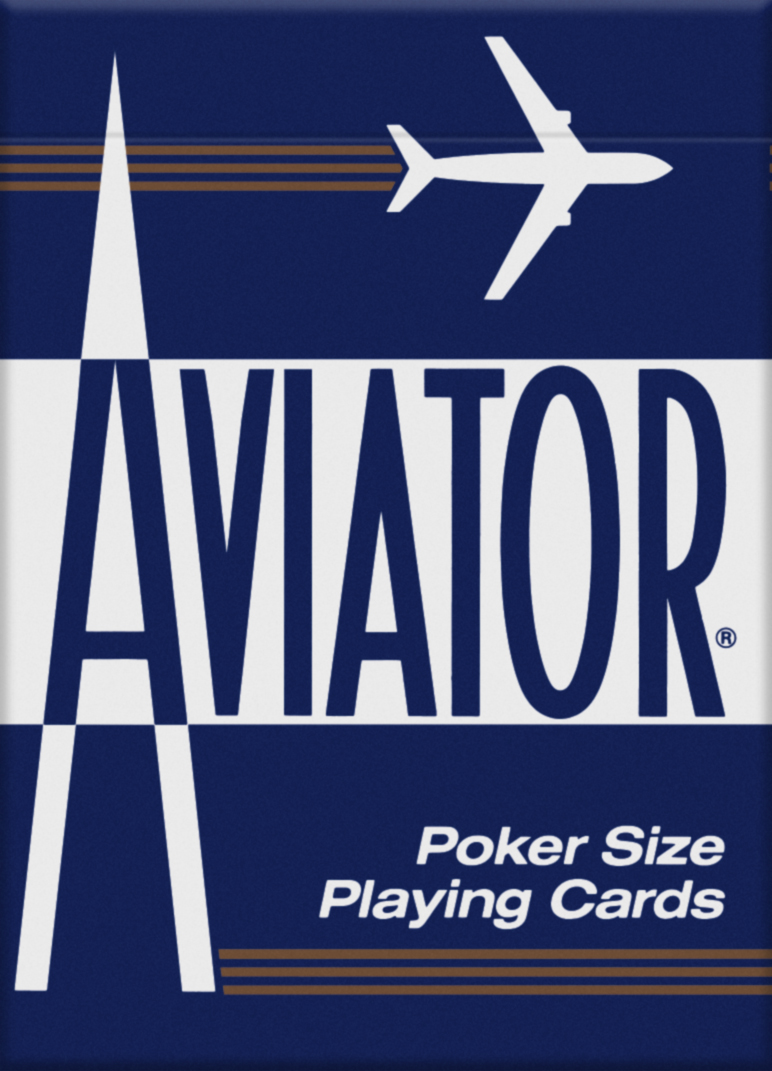
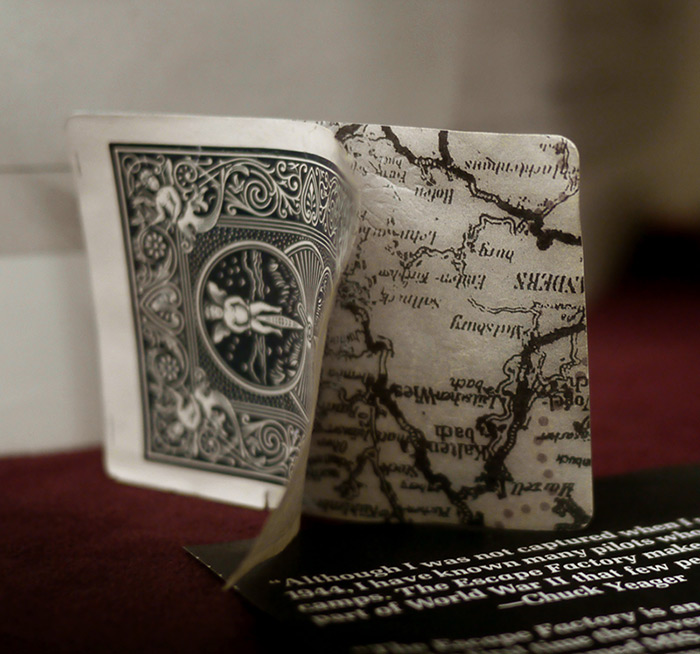
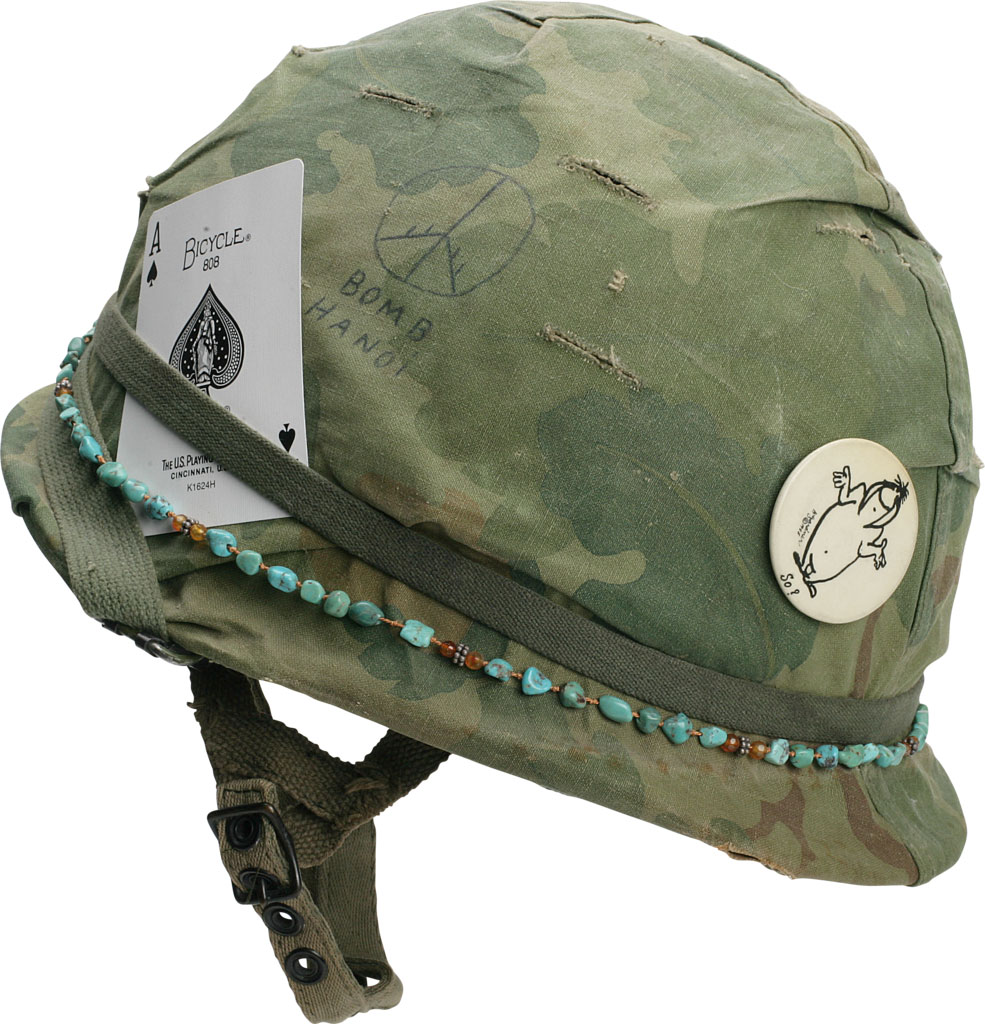
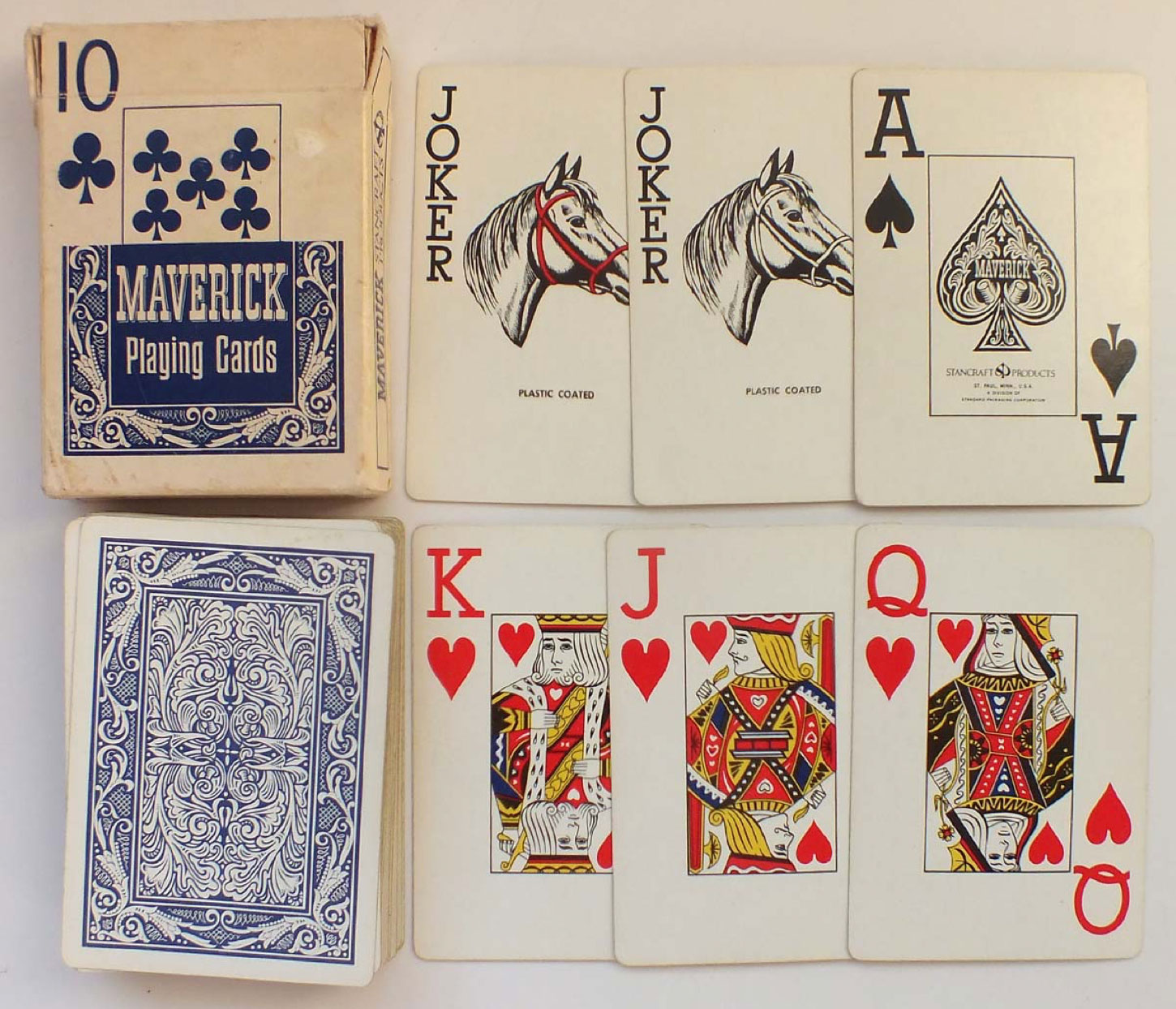
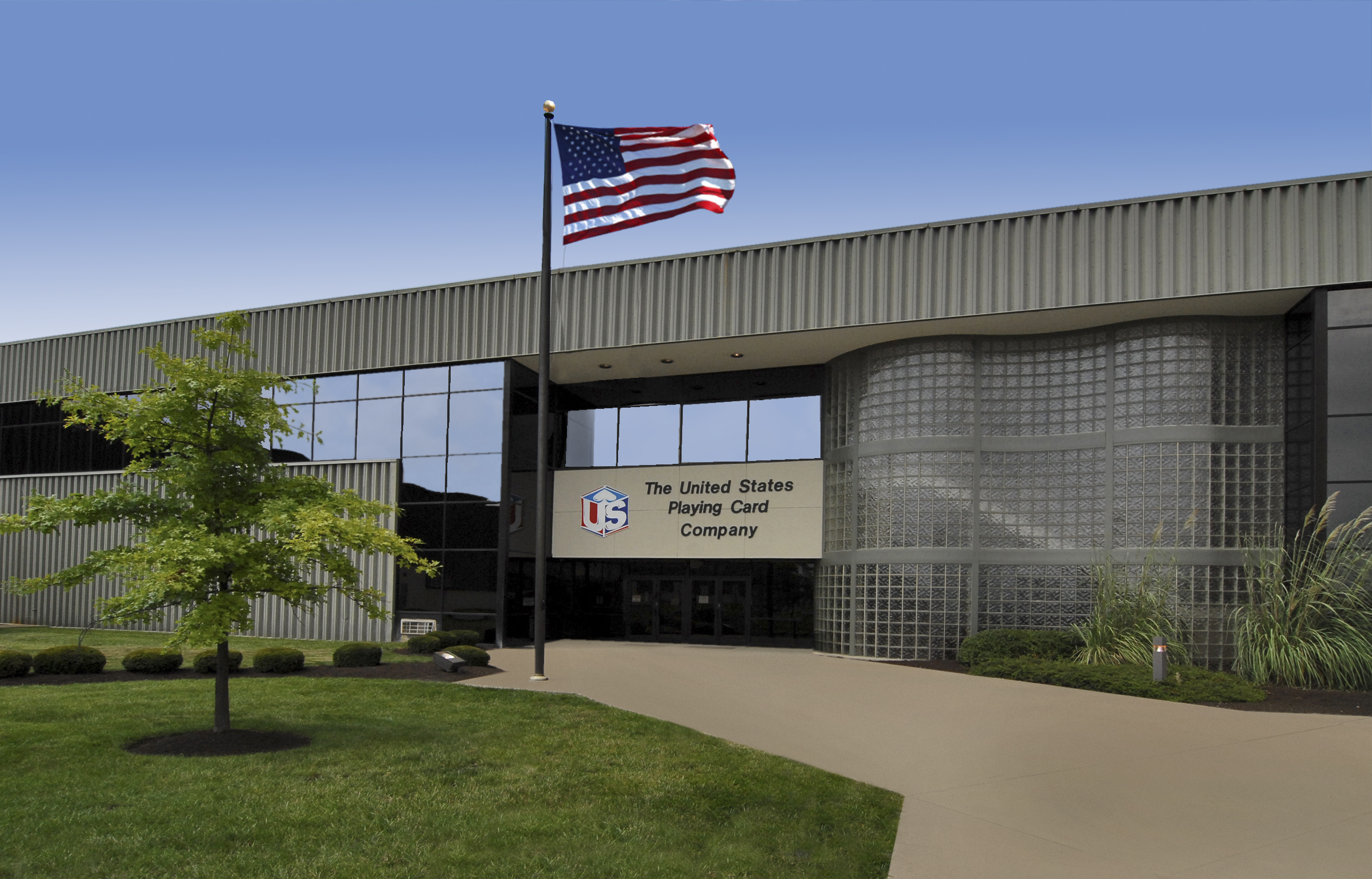
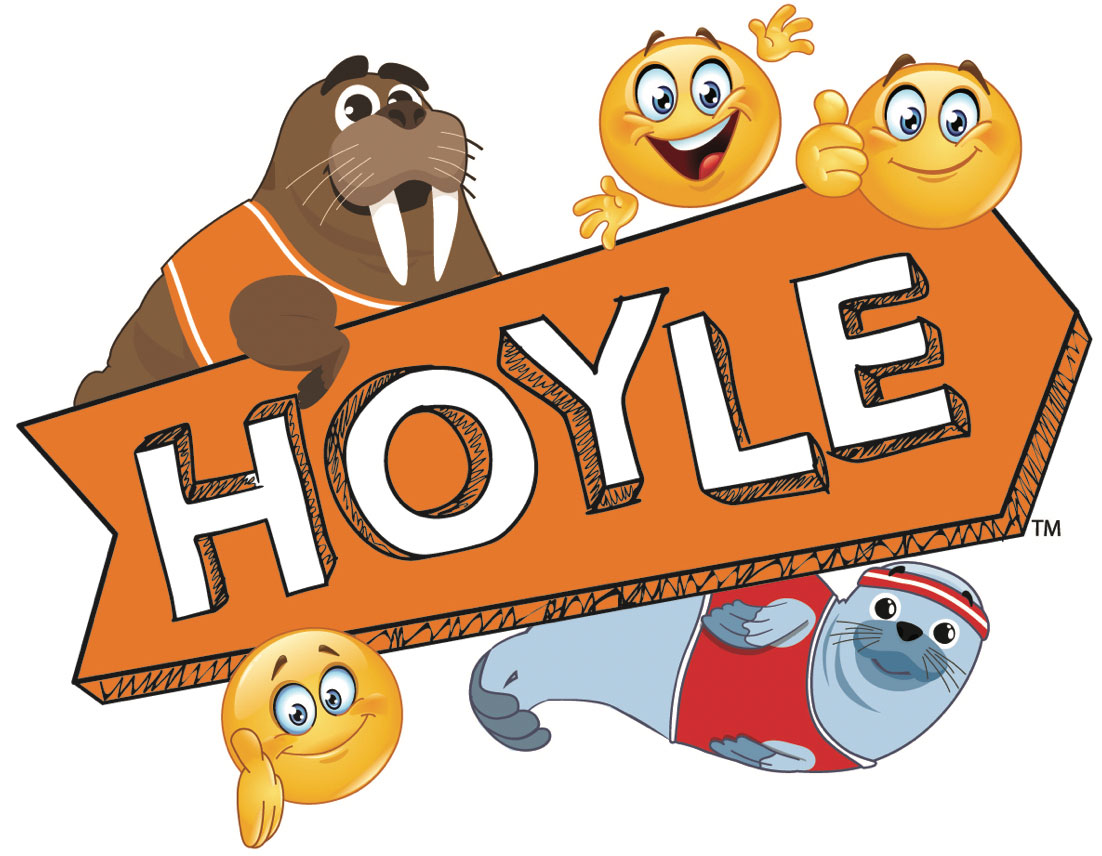
1867
Russell Morgan & Co. is established. The company initially prints theatrical and circus posters, placards, and labels.
1885
Cycling on unicycles, bicycles, and tricycles is taking the country by storm. Employees are asked to suggest an attractive name for a new product, and the name "Bicycle" is enthusiastically accepted. The Rider Back makes its debut and has not gone out of production since.
1890
The Tally-Ho® brand is created by New York Consolidated Card Company.
1892
Bee® playing cards are first created by New York Consolidated Card Company.
1894
The United States Playing Card Company is formed from the United States Printing Company, formerly Russell Morgan & Co.
1900
USPC moves to a newly built factory in Norwood, Ohio, a suburb of Cincinnati.
1907
The Andrew Dougherty Company merges with USPC.
1927
Aviator® brand is introduced in honor of Charles Lindberg’s historic flight across the Atlantic Ocean.
1940s
WWII: In collaboration with the US government, USPC develops playing cards that aid the war effort. USPC’s Spotter Cards deck features illustrations of tanks, ships, and aircraft used by enemy forces, helping military personnel identify the enemy. USPC also produces special decks of playing cards for American troops that features the latest military intelligence. The cards conceal maps printed between two layers of the cards, which reveal escape routes from prisoner of war camps.
1960s
Vietnam War: The Ace of Spades served a famous purpose in the war in Vietnam. In 1966, two lieutenants wrote USPC and requested decks containing only Bicycle® Aces of Spades. The cards were used for psychological warfare. The Viet Cong were very superstitious and highly frightened by this Ace. The Spades predicted death and suffering, and the Viet Cong even regarded lady liberty as a goddess of death. USPC shipped thousands of the requested decks gratis to troops in Vietnam. The cards were deliberately scattered in the jungle and in hostile villages during raids. The very sight of the Bicycle® Ace card was said to cause many Viet Cong to flee.
2001
USPC purchases Hoyle Products, known for its Hoyle® and Maverick® playing card brands.
2009
USPC relocates to a single-floor facility in Erlanger, KY, further improving operational efficiency and providing a huge opportunity for future expansion.
2017
USPC relaunches the Hoyle® brand as educational card games for kids.
 Prev
Prev